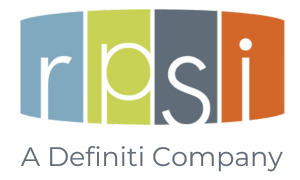Plan Sponsor Outlook – 2nd Quarter 2023
One for the Ages
How Will You Embrace the Automatic Age?
Since the beginning of time, there have been several ages that reflect society propelling itself forward in physical, intellectual and technological ways. First, there was the Stone Age. Then came the Iron and Bronze Ages (not to mention the Golden Age and the Age of Enlightenment).
Welcome to the Automatic Age
Section 101 of SECURE Act 2.0 requires new 401(k) and 403(b) plans to automatically enroll participants, with the initial automatic enrollment amount being at least 3% but not more than 10%. Each year, that amount must be automatically increased by 1% until it reaches at least 10%, but not more than 15%.1 However, plans that existed on or prior to the December 29, 2022, signing of the SECURE Act do not have to follow this new provision — they were grandfathered in.
Breaking Down the Grandfather Clause
Just how many plans are out there right now that haven’t yet embraced the Automatic Age? According to the Society for Human Resource Management’s 2022 Employee Benefits report2 (based on responses from 3,129 human resource professionals across the United States), only about a half of the plans automatically enroll new or existing employees, and only 26% automatically increase employee contributions annually. Vanguard’s “How America Saves 2022” report3 reveals that 56% of Vanguard plans have adopted automatic enrollment and two-thirds of those plans have implemented automatic annual deferral rate increases. PSCA’s 65th Annual Survey (most recent) puts those figures at 59% (auto-enroll) and 78% (auto-increase).
Embracing the Numbers
For several years now, the case has been made that automatic enrollment and escalation plan features work. According to a 2012 ground-breaking Ariel/Aon-Hewitt study, automatic enrollment helps workers who wouldn’t normally participate in a company’s retirement plan. “The most dramatic increases in enrollment rates are among younger, lower-paid employees, and the racial gap in participation rates is nearly eliminated among employees subject to auto-enrollment,” the study found.4 More recently, John Hancock’s “State of the participant 2022”5 report found that auto-enroll/auto-increase features used in tandem greatly enhance a participant’s chances of achieving retirement readiness.
| Plan Design | % Retirement-Ready 2020 | % Retirement-Ready 2022 |
| No auto features | 46% | 52% |
| Auto-enroll at 5%+ | 48% | 56% |
| Auto-enroll at 5% with annual increase starting at 1%, up to 10% | 55% | 65% |
The majority of surveys and research reports addressing automatic features show that adoption, usage and effectiveness are on the rise from previous years, which is cause for great optimism. However, they also suggest that there is still more work ahead for many plan sponsors and advisors in the Automatic Age.
1 Employees may opt out; in addition, there is an exception for small businesses with 10 or fewer employees, new businesses that have been operating for less than three years and church plans.
2 The Executive Summary of the Society of Human Resource Management’s “2022 Employee Benefits Survey” can be viewed at: https://tinyurl.com/3xpr3sd3.
3 Vanguard’s “How America Saves 2022” can be viewed at: https://tinyurl.com/5c29waxw.
4 Senate Finance Committee, SECURE 2.0 Act of 2022 ; Ariel/Aon-Hewitt study referenced in Section 101.
5 John Hancock’s “State of the participant 2022” can be viewed at: https://tinyurl.com/4ftvxe48.

Mistakes Happen
When Plan Errors Occur, Reach For The 401(k) Plan Fix-It Guide
As a plan sponsor, at some point you are likely to discover that a plan failure or error has occurred — especially after the plan testing season concludes. Mistakes do happen and you won’t be alone. A recent report published by the American Society of Pension Professionals and Actuaries (ASPAA) studied over 3,200 small business plans1 and found that nearly half of them failed the top-heavy test.
A Blueprint for Fixing Mistakes
Whether it’s through a plan audit or some other review process, it can be stressful to learn that a failure has occurred and to figure out how to correct it. The good news is that these errors and failures are easily fixable, and without fees or penalties under the right circumstances. The 401(k) Plan Fix-it Guide, made available by the Internal Revenue Service (IRS), provides a blueprint to follow to help resolve errors to the agency’s satisfaction and avoid making the same mistake(s) in the future.
Common Mistakes Covered by the Guide
The top mistakes covered by the guide include:
- Lack of updates to the plan document to reflect recent changes in the law
- Failure to base plan operations on the plan document
- Improperly defining compensation for deferrals and allocations
- Employer-matching contributions were not made to all appropriate employees
- Failure of 401(k) ADP and ACP nondiscrimination tests
- Failure to provide eligible employees the opportunity to make an elective deferral
- Elective deferrals were not limited to the amounts under Internal Revenue Code (IRC) Section 402(g) and excess deferrals
- were not distributed
- Failure to timely deposit employee-elected deferrals
- Participant loans fail to conform to the requirements of the plan document and IRC Section 72(p)
- Hardship distributions were not made properly
- Required contributions were not made to the plan
- Not filing a Form 5500-series tax return this year
Click, Print and Keep Handy
Every year it’s important to review the requirements for operating your 401(k) retirement plan. Consider going old school and printing out the IRS 401(k) plan checklist at https://www.irs.gov/pub/irs-pdf/p4531.pdf to help you manage your compliance requirements with many of the important rules. The checklist includes examples of how
to find, fix and avoid each mistake.
SECURE Act 2.0 and Correcting Plan Errors
SECURE 2.0 delivered a few new rules regarding correcting plan errors related to overpayments to participants or beneficiaries; it also contains enhancements to the plan error self-correction program under the IRS’s Employee Plans Compliance Resolution System (EPCRS). These new rules and enhancements became effective as soon as SECURE 2.0 was signed into law late last year. For more details, consult this article: https://tinyurl.com/2wjwn8sm.
1 “What Percentage of Plans Fail 401(k) Nondiscrimination Testing?” (January 20, 2022); https://tinyurl.com/fb6wfw7u.
Plan Sponsors Ask…
Communicating retirement planning concepts to plan participants through clear, jargon-free language may be more dependable and effective than using imagery, suggests new research from Capital Group. The language that is selected for retirement communications is critical to prompting participants to engage and take the steps they need to prepare for retirement. Because each person is unique, there really is no “picture” that truly represents retirement for everyone. In fact, asking employees to “imagine retirement” and selecting an image of a senior couple enjoying their grandchildren on a beach (or on a travel adventure) may be considered by many employees to be extremely subjective (not to mention very cliché) — and actually turn them off.
The Capital Group’s, “The art of retirement communications: How well do people today connect with the language and images of retirement?,” suggests best practices for plan sponsors and also highlights imagery and messages to avoid.
You are not alone in having a lot of choices available. The 65th Annual Plan Sponsor Council of America’s Survey of Profit-Sharing and 401(k) Plans found that more than a quarter of plan sponsors offer more than 26 options, whereas another 18% offered 21-25, and 27% offered 16-20. A long-held principle of behavioral finance is that more choice doesn’t always lead to better decisions. As such, it’s probably a good idea that you are reviewing your investment menu and considering reducing the options. Are there funds on the current menu that either aren’t being used or aren’t being used widely? You may find that they are contributing very little other than information overload for your employees. Not to mention adding more pages to cover in your investment reviews.
Data from Northwestern Mutual’s “Planning & Progress Study 2022” reveals that Americans between the ages of 18 and 25 — known as Generation Z — are taking significant steps to improve their financial well-being with the goal of retiring at age 59; years ahead of the generations that preceded them. They also were the most likely to build savings during the pandemic and begin working with an advisor. However, while they prioritize an early retirement, money is not what drives most of them at work. Nearly two-thirds (64%) said personal fulfillment is more important in a career than money (36%).
Pension Plan Limitations for 2023
- 401(k) Maximum Elective Deferral – $22,500* (*$30,000 for those age 50 or older, if plan permits)
- Defined Contribution Maximum Annual Addition – $66,000
- Highly Compensated Employee Threshold – $150,000
- Annual Compensation Limit – $330,000

Plan Sponsor’s Quarterly Calendar
- Conduct a review of second quarter payroll and plan deposit dates to ensure compliance with the U.S. Department of Labor’s rules regarding timely deposit of participant contributions and loan repayments.
- Verify that employees who became eligible for the plan between April 1 and June 30 received and returned an enrollment form. Follow up for forms that were not returned.
- Ensure that the plan’s Form 5500 is submitted by July 31, unless an extension of time to file applies (calendar-year plans).
- Begin preparing for the distribution of the plan’s Summary Annual Report to participants and beneficiaries by September 30, unless a Form 5500 extension of time to file applies (calendar-year plans).
- Provide quarterly benefit/disclosure statement and statement of fees and expenses that were charged to individual accounts to participants (due 45 days after end of quarter).
- Submit employee census and payroll data to the plan’s record-keeper for midyear compliance testing (calendar- year plans).
- Confirm that participants who terminated employment between January 1 and June 30 elected a distribution option for their plan account balance and returned their election form. Contact those whose forms were not received.
- Begin preparing the applicable safe harbor notices to employees, and plan for distribution of the notices between October 2 and December 2 (calendar-year plans).
- Distribute the plan’s Summary Annual Report by September 30 to participants and beneficiaries, unless an extension of time to file Form 5500 applies (calendar-year plans).
- Send a reminder memo or email to all employees to encourage them to review and update, if necessary, their beneficiary designations for all benefit plans.
Consult your plan’s financial, legal or tax advisor regarding these and other items that may apply to your plan.
Kmotion, Inc., 412 Beavercreek Road, Suite 611, Oregon City, OR 97045; 877-306-5055; www.kmotion.com
©2022 Kmotion, Inc. This newsletter is a publication of Kmotion, Inc., whose role is solely that of publisher. The articles and opinions in this publication are for
general information only and are not intended to provide tax or legal advice or recommendations for any particular situation or type of retirement plan. Nothing
in this publication should be construed as legal or tax guidance, nor as the sole authority on any regulation, law, or ruling as it applies to a specific plan or
situation. Plan sponsors should always consult the plan’s legal counsel or tax advisor for advice regarding plan-specific issues.
This material is intended to provide general financial education and is not written or intended as tax or legal advice and may not be relied upon for purposes
of avoiding any Federal tax penalties. Individuals are encouraged to seek advice from their own tax or legal counsel. Individuals involved in the estate planning
process should work with an estate planning team, including their own personal legal or tax counsel.
